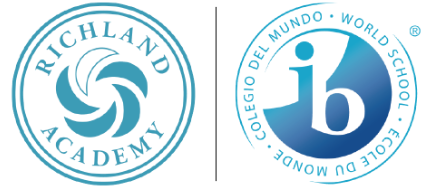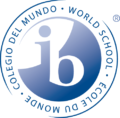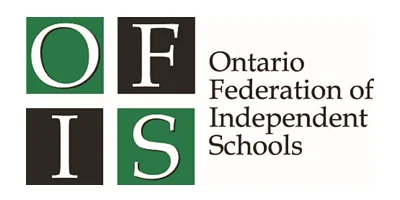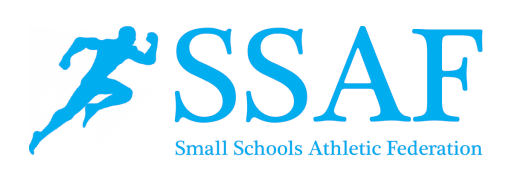Inquiring Minds is delighted to share today’s post from Mrs. Jane Buckley-Black, Richland’s Junior Kindergarten teacher.
I was most inspired by a rich Pinterest posting this past week entitled: ‘Outdoor Maths: Measuring the Size of Sticks.’ This was posted by ‘Creative Star Learning’ which is an organization that “supports and develops outdoor learning and play at a national, local, and school level with practical ideas and information.”
As I reflected on the posting, I thought; what a wondrous way to engage the children with extending and enriching their knowledge about ‘Measurement.’ I proceeded to give our JK children a task: “Please bring in a stick from your garden for a challenging task.” For the next few days the children were wondering and sharing: “What are we going to do with our sticks?” and “I brought a stick from my garden” and “I found a wobbly stick outside at recess” began to emerge from our students.
I proceeded to give our JK children a task: “Please bring in a stick from your garden for a challenging task.” For the next few days the children were wondering and sharing: “What are we going to do with our sticks?” and “I brought a stick from my garden” and “I found a wobbly stick outside at recess” began to emerge from our students.
We had a variety of sticks arrive of many different sizes, and textures, some that were straight and some that were deemed ‘wobbly’. On Wednesday morning, we extended the challenge to our JK children that began with this question: “How can we solve the following dilemma with our sticks: How can we manipulate our sticks to determine the shortest to the tallest?”
The conversations began with a dialogue about what the children knew about measuring. “We can measure how tall you are” L. shared. “Maybe with the sticks we will measure us and find out how tall we are” remarked M.
 “Say I was a stick this small (showing with her hands) and then there was a stick this long (making a bigger stick with her hands) and then I put them together to see the smaller and longer one” declared J.
“Say I was a stick this small (showing with her hands) and then there was a stick this long (making a bigger stick with her hands) and then I put them together to see the smaller and longer one” declared J.
Words such as “tiny” and “shortest” were affirmed that meant the ‘same as’ “shortest.” Words for “tallest” were deliberated: “longest”, “biggest”, “big” and “largest.”
The children voiced: “We need a spot for all of our sticks to line up!” The edge of the carpet was determined as the spot “we need to line up our sticks from.” A rock was selected as one end called “the shortest spot” and another rock was determined as “the tallest spot.” The challenge posed to the children was: to make the line of sticks increase in size. Each child took a turn to put his/her stick down onto the tiled floor, carefully lining up one end of the stick to the edge of the carpet.
The challenge posed to the children was: to make the line of sticks increase in size. Each child took a turn to put his/her stick down onto the tiled floor, carefully lining up one end of the stick to the edge of the carpet.
It was a deceptively challenging and higher level thinking task. The children needed to evoke many strategies, answer questions and share knowledge. The JK implemented: ‘analyzing’, ‘identifying’, ‘formulating’, ‘hypothesizing’, ‘organizing’, ‘comparing’ and ‘distinguishing’ the differences and similarities of their sticks, as well as share patterns about their thinking. Much deliberation, negotiation and measuring and comparing emerged, as each stick was added to the line of sticks.
One specific sequence of learning unfolded for J., seen in this sequence of photos of her learning, as she moved the sticks around to fit her stick into the line of sticks at the shorter end. L. demonstrated how to determine where his stick fit ‘best’ in the sequence of sticks by measuring his stick against others. With no prompting, he determined his stick was on the tall end of the sequence, and he began with the tall end of the sticks.
L. demonstrated how to determine where his stick fit ‘best’ in the sequence of sticks by measuring his stick against others. With no prompting, he determined his stick was on the tall end of the sequence, and he began with the tall end of the sticks. Here are some of the thoughts, comments and theories that the children shared:
Here are some of the thoughts, comments and theories that the children shared:
- “This one is the same size.”
- “Can you measure your stick with mine?”
- “Look, it’s the same!” “It’s the same size.”
- “It’s actually bigger than the other stick.”

“These two are the same height. It means this one is here and this one is’ the tallest and this is shorter, and that’s what ‘height’ means” stated J.
Many comments unfolded revolving around: the length, the width, and height of the sticks. The children also inquired if we straightened the bent sticks, would they still be the same size? Many decisions had to be discussed and decided upon. More discussions and a ‘collective agreement’ had to be reached amongst the children.
 The children were absorbed in the activity and the audience had much to ask and question.
The children were absorbed in the activity and the audience had much to ask and question.
The learning did not end there. What then unfolded during Centres was a flurry of measurement, which extended into literacy and numeracy. The children used a variety of sticks in the classroom to measure numerous items they wished to explore, leaving traces of their learning with numbers and words.
 How would you and your children extend on our learning by bringing nature indoors through measurement?
How would you and your children extend on our learning by bringing nature indoors through measurement?









